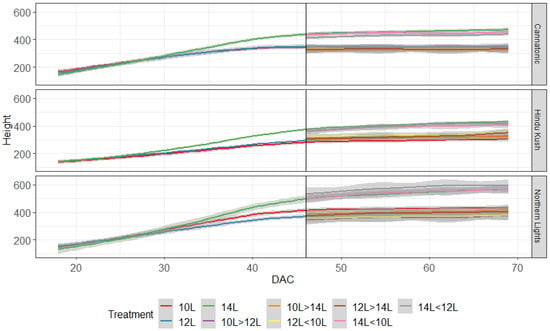Charles Dankens
Well-known member
Ya. I hear all that, makes sense to me.The only thing ive got against this study is that they are studying uvb, with an incomplete coverage of the standard par range and uva. Between 440 and 290nm there is pretty much zero light. They even mention this themselves, theres a synergistic effect between uva and uvb. You need at least a bit uva in order to build tolerance for uvb.
Beyond 660nm missing far reds leads to an uncompensated blue response which of course leads to less growth and yield.
This paper basicly says that adding uvb leds to standard blurple isnt a good idea, which i feel i more or less agree with.
Im not fully familiar with bugbees uv research but most papers ive seen with "no statistic significant uv effect" usually have at least one hole you can poke in it.
Losing yield: yes, it is to be expected if you add blue/violet/uv without compensating the blue response with higher red/far red.
Total thc in plant dont increase: same as above, if you get higher thc but lower yield of course total thc will remain similar, you need to compensate with reds, especially far red. At least add uv abd red/far red in equal proportions, or you will get non optimal results. Basicly youd need to make test comparing a non uv spectrum to a uv rich spectrum where red blue green proportions are similar. Just adding uv is going to change those proportions towards blue response which means less growth in general. The only light i see on the market that does this prawns boards/strips which use 5 red diodes to compensate near uva diode.
And even so higher thc and quality in exchange for yield may be desirable anyway, depends on your market and own desires.
Ive still not seen any studies trying this except for somewhat non formal testing of @Prawn Connery s boards versus various other lights which have been leaning towards positive results.
Im very happy to admit i may be wrong but i guess im just the kinda guy that has to test all the frigging UVs until i get the results i like, lol
To those basing their opinion in this purely on studies; i suggest you do you our own research aswell (even if it sounds very Q-Anon) and just wire up some diodes over a tray try out how you like the results. We had the best luck with combining uva with high red flowering spectrum; 2700k 90cri + 660nm. Added about 10% of total wattage of uva: no yield reduction and nicer quality; both high and smell/taste.
We also tried 4000k +660nm + uva + far red + uvb which didnt get great improvement of quality or yield.
Waving papers saying "nooooo" at people who actually try for themselves what you dont have the guts to try yourself doesnt seem like a good way of progressing together.
I have 2 uv rigs. I've run various strains under each of them. I have not sent any flower to the lab but I also never felt that I was getting much effect in my setup.
I




